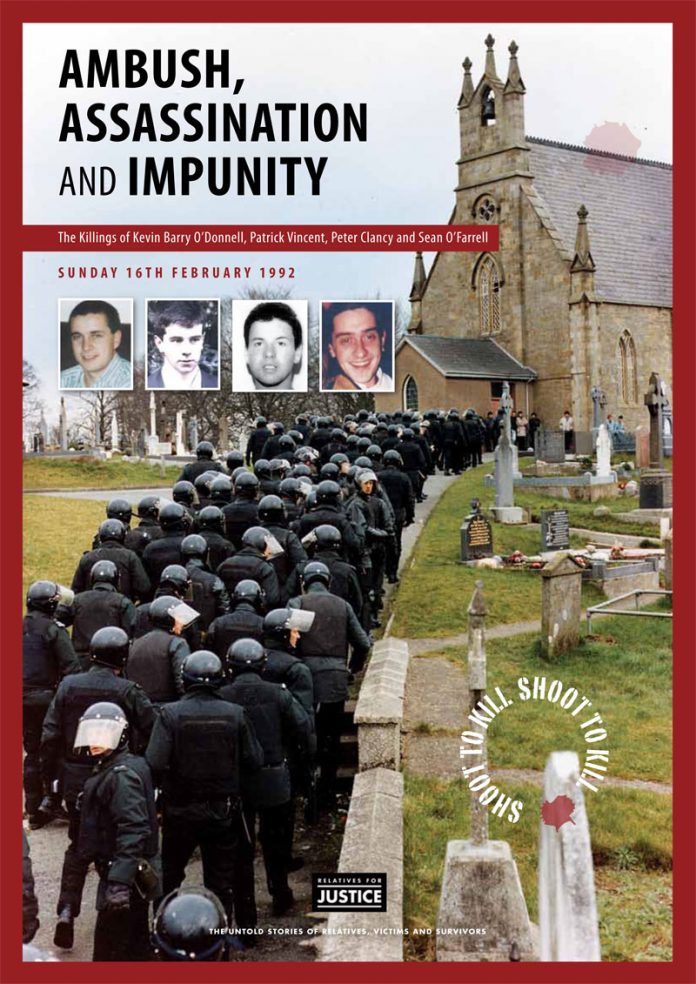The inquest into the killings of Barry O’Donnell (21); Peter Clancy (21); Patrick Vincent (20); and Sean O’Farrell (22) finally opened this morning; some 31 years after their deaths.
All four young men were killed in hail of gunfire from a covert unit of the British army secreted behind a hedgerow at Clonoe Chapel carpark on the evening of February 16, 1992.
Their assailants knew in advance that the four men, all IRA Volunteers, would meet at the carpark after they’d launched an attack on the fortified RUC/British army barracks in Coalisland.
The barracks had been well prepared for the attack with personnel being reduced, and removed from positions of perceived vulnerability. The net result of the attack were bullet strikes on the façade of its exterior concrete structure.
It was further revealed today that all of the weapons in the possession of the Active Service Unit (ASU), AKM’s and a Soviet made Dushka machine gun mounted on the tailgate of a lorry, were locked into safety mode when examined after the killings.
Presumably, those involved in the attack had been preparing to use the carpark as a means of quickly dismantling and returning their weapons for transportation away from the scene and thus posed no threat. This would have also presumably been known as part of the overall intelligence picture.
Essentially, this was an ambush situation and one in which the risk to the covert unit was negligible.
They were content to allow the attack to proceed and then kill those involved afterwards.
In his opening statement David McDowell KC, counsel for coroner Justice Humphries, outlined the strict procedures that must be followed when investigating the taking of life by an arm of the State in accordance with Article 2 of the ECHR (The Right To Life).
In such circumstances he said: “the inquest must extend beyond simply an investigation into the immediate cause of the deaths and must also consider the broad circumstances in which the deaths occurred. The reach of the inquiry must extend to the planning and control of the military operation that resulted in the deaths. It is incumbent on the State to ensure that operations are planned and controlled in such a way as to minimise the need to resort to lethal force. Importantly, the inquest must also be capable of leading to a determination of whether the use of lethal force was justified.”
Mr McDowell continued that the inquest will likely consider the following:
- The state of knowledge of those involved;
- The purpose of the operation;
- Its planning and control;
- The actions of those involved at all stages of the operation;
- The nature and degree of force used;
- The circumstances in which force was used; and
- Whether the use of force was justified.
A particular focus of the inquest he said; “will be that final question, i.e. whether the use of force was justified”.
It was later revealed that there was no attempt to effect arrest, and that there were no verbal warnings before the covert unit engaged in its ambush of those they killed.
Under Rule 17 approximately 78 witness statements were read into the record. These ranged from civilians, emergency medics, RUC, and British army personnel involved in the aftermath of the killings.
Statements from the covert unit involved in the killings, including those who planned, controlled and had oversight of the operation, are not yet available.
The inquest continues tomorrow and will hear from two medics who attended the scene.
Relatives for Justice is supporting the families.














